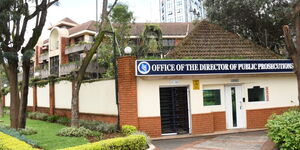KUCCPS 2024 Courses for KCSE Grade E Students [LIST]
Students who scored Grade E in their 2023 Kenya Certificate of Secondary Education (KCSE) have a chance to pursue their career of choice by starting with artisan/level 4 programmes before proceeding to certificate courses.
The courses are offered through the Kenya Universities and Colleges Central Placement Service (KUCCPS) portal and students will qualify for a government sponsorship.
Students who sat for KCSE between 2000 to 2022 and scored a mean grade of D- and E also are qualified for the artisan courses.
The courses are divided into 14 programmes which are Business, Building and Construction, Engineering and Technology, Food Science, Social Sciences, Information Technology, Hospital, Hotel and Tourism, and Clothing, Fashion and Textile.
Others are; Agricultural Sciences, Natural Sciences, Technical Sciences, Hair Dressing and Beauty Therapy, and Library and Information Science.
Business
Under this program, interested candidates can apply for Storekeeping, Accounting Technician, and Secretarial positions.
Additionally, students can also apply for Office Administration and Human Resource Management, both of which fall under the business category.
Building and Construction
This is a programme for students who have a passion for masonry and construction in general.
Artisan courses under this category include Building Technology, Construction Technology, Masonry, Building Artisan Level 4, and General Fitting.
Food Science
Students who want to work in the hospitality industry are encouraged to apply for courses in this program.
They include Food Beverage Production and Services (Production, Sales options), Artisan Craft in Food and Beverage, Culinary Arts, and Food Processing Technology.
Social Sciences
There are only two courses in this category which are Artisan in Social Work and Artisan in Social Work - Level 4.
Information Technology
IT enthusiasts can pursue different courses in this category including ICT, Artisan Level 4, NVCET in IT, and ICT Technician Level 4.
Hospitality and Tourism
Grade D- and E students can pursue tour Guiding and Operations (Level 4) and Artisan in Catering and Accommodation under this category.
Agricultural Sciences
Courses under this programme are Agribusiness, Agriculture, Horticulture Nursery Management, Agricultural Mechanics and Entrepreneurial Agriculture.
Others include Agriculture Extension and Rural Sociology Level 4, and NVCET in Modern Methods of Agriculture.
Hair Dressing and Beauty Therapy
This is the most popular program for students seeking artisanal courses.
Artisan courses in this category include Hairdressing and Beauty Therapy. Upon completion, students can establish salons or beauty shops, or seek employment in the beauty and cosmetics industry.












